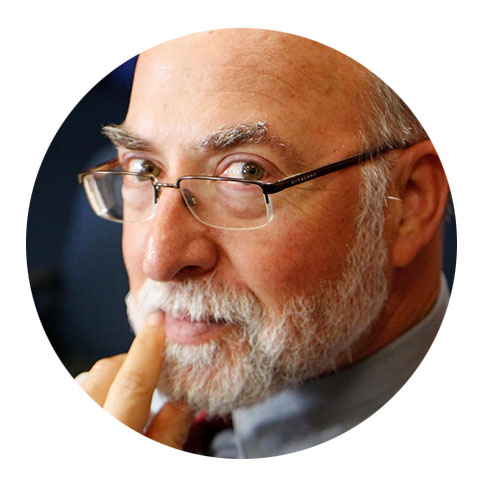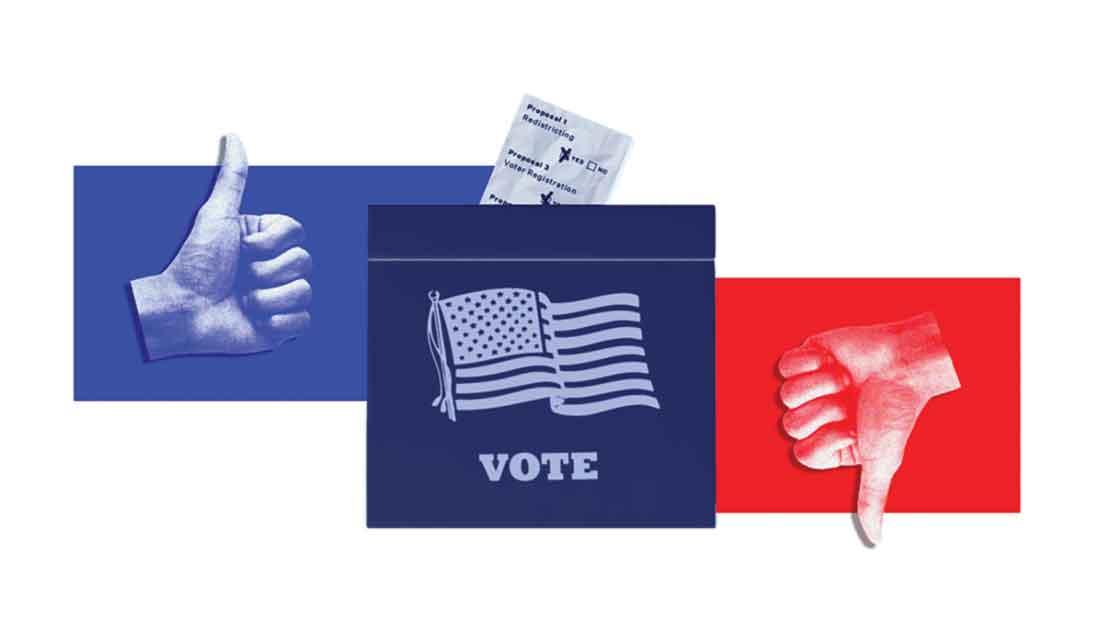The State and County Ballot Propositions
California’s general election ballot is one of the shortest in recent history, and that’s a relief. In 1914, only three years after voters approved a package of progressive reforms including the initiative, referendum and recall, voters had a staggering 48 ballot measures to consider; more recently, the 1990 elections threw 45 propositions at them to decide.
By the 1970s, interest groups and their consultants began to figure out how to game the system, touching off an initiative frenzy to hustle the voters with expensive and deceptive advertising campaigns.
Things have calmed down a lot since then. But in 2011, Gov. Jerry Brown signed a bill offering a subtle but important fix that made our ballot process even easier to deal with. Until 1958, initiatives—the measures placed on the ballot by signature petitions, not by the Legislature—were restricted to November general elections. In 1960, a new law took effect to allow initiatives to appear on primary and special election ballots, which historically had lower turnout and thus fewer voters making major policy decisions. Initiatives proliferated. But since 2012, the law reverted to scheduling ballot initiatives exclusively in November general elections, when the greatest number of voters participate.
And so, we have only seven statewide ballot measures to decide in the upcoming November 8 election, and two Countywide measures of potential interest and relevance to Topangans.
Here are my recommendations:
STATE
1 YES. A legislative constitutional amendment, supported by Gov. Gavin Newsom and the state legislature, which requires a public vote to enshrine broad abortion rights in our state constitution. It’s a direct response to the U.S. Supreme Court’s overturning of the 1973 Roe v. Wade decision, an action that stripped away nearly 50 years of U.S. constitutional rights for women.
26 NO. One of two special-interest initiative constitutional amendment and statute combos aimed at expanding current gambling activities and creating a sports-betting industry in California by allowing in-person betting at tribal casinos and four horse-racing tracks. Some Native American tribes with casinos, and the gambling industry, are dumping millions into passing it, while existing card clubs are spending millions to defeat it because it potentially threatens their business. Unclear how much additional revenue it will generate, or what additional costs it may impose.
27 NO. Another special interest initiative constitutional amendment and statute combo that would legalize online and mobile sports betting operated by federally recognized Native American and open to California residents outside tribal lands. Cynically, the measure is being advertised as a homelessness prevention initiative because it dedicates much of the tax and licensing revenue to homelessness programs. But in addition, it cheats K-12 public education out of their share by exempting these sports-betting revenues from counting against the state spending limit that guarantees schools 40% of the annual budget. The reason may be that if the schools got their fair share, there wouldn’t be enough left over to plausibly market this gambling license as a “homelessness” program.
28 NO. An initiative to earmark an additional 1% annually of the state’s constitutionally mandated K-12 school budget for arts and music education. This sounds like such a mom-and-apple pie issue that literally nobody submitted a ballot argument against it. Who’s against arts and music, right? Well, here’s the problem: the more ballot-box budgeting encumbers legislative decision-making, the harder it is for elected officials to balance and prioritize competing interests. But that’s exactly what we elect them to do, not make those consequential spending decisions ourselves based on the latest shiny ad campaigns. This relatively benign measure would establish a very bad precedent encouraging other interest groups in the future to chip away at the state budget for their own narrow purposes.
29 NO This is the third go-around, after similar initiatives failed in 2018 and 2020, for a union-backed effort (Service Employees International Union-Healthcare West) to organize big kidney-dialysis providers by imposing expensive and onerous regulatory requirements on the industry to pressure them. I’m not at all anti-union—I’ve belonged to two and served as a shop steward—but the negative effects would clearly fall most heavily on the dialysis patients, their health insurers, and state and local governments. Some clinics could be forced to curtail services or close altogether. Even worse, the union sponsors are hiding behind dialysis patients to sign their ballot arguments.
30 NO This initiative would impose an income-tax surcharge on individual and married taxpayers earning more than $2 million annually to promote zero-emission vehicles (ZEV) and wildfire prevention programs. What’s not to like about that, right? EXCEPT THAT this is a cynical gimmick heavily bankrolled by the rideshare industry, especially major donor Lyft, to offload the expense of converting their drivers’ vehicles away from the industry, and on to state taxpayers. If the state enacts its own ZEV requirements, this measure wouldn’t increase the number of ZEVs at all. And its fiscal effects could be complicated: in addition to increasing income tax revenue, it could also leak revenue as high-income taxpayers adopt tax-avoidance strategies; it would reduce gasoline tax revenues that pay for public transit and road projects; and it could cut into other programs if these new encumbered income-tax revenues hit the state’s constitutional spending limit and force reductions elsewhere in the budget.
31 YES. No sooner had the governor signed a bill in 2020 banning most flavored tobacco products designed to hook kids, than the tobacco industry rushed to qualify a referendum to overturn the measure; as a result, that law has yet to take effect until a referendum vote to retain it. Tobacco companies, under the banner “Californians Against Prohibition,” are out-raising supporters like the American Cancer Society, the American Lung Association, Kaiser Foundation Health Plan, and former NY Mayor Michael Bloomberg by more than 4:1.
COUNTY:
A NO. Sheriff Alex Villanueva is a disaster and deserves to be defeated by Robert Luna in the November election. He has defied the Board of Supervisors, the County’s Civilian Oversight Commission, and even his own inspector general, acting accountable to no one. But it would be a mistake to adopt this measure of dubious legality to subordinate an elected sheriff to removal from office for any reason by a body of other politicians. The proper way is electoral defeat or voter recall during a regularly scheduled election.
C YES. The only thing worse than a lightly regulated cannabis industry in unincorporated County areas would be an untaxed cannabis industry in those areas. While I’m no fan of proliferating dispensaries, if we’re going to allow them then they need to be taxed more heavily.
For additional resources, I recommend:
lavote.gov for County elections;
sos.ca.gov/elections for statewide ballot information; and
https://cal-access.sos.ca.gov/ for statewide campaign finance reports.
Early voting runs from Saturday, October 29 through Election Day, November 8.
As House Speaker Nancy Pelosi reminds us, “If you don’t vote, you don’t count.”









